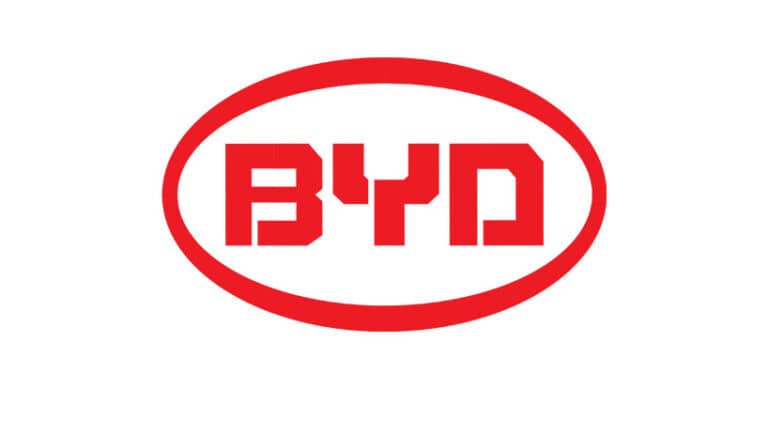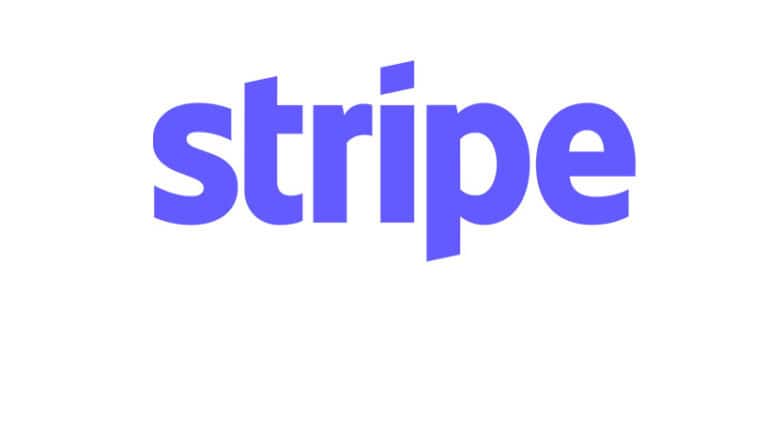Amazon’s machine learning (ML) interview process is one of the most challenging in the tech industry. Success requires thorough preparation tailored to the Mastering Amazon’s format and expectations. Amazon's emphasis on cutting-edge technologies, ML candidates need to be well-prepared to demonstrate their expertise and problem-solving abilities. This comprehensive guide will walk you through everything you need to know to ace the Amazon ML interview, covering the interview process, technical and behavioral questions, and insider tips for success.
1. Introduction
Amazon’s ML roles demand a high degree of technical competence, experience with machine learning systems, and alignment with the company’s core values. As a global leader in technology, Amazon leverages machine learning for a variety of applications, from product recommendations to inventory management and cloud-based AI services. Consequently, ML candidates must be adept in areas like coding, system design, machine learning algorithms, and behavior-based interviews.
This blog will provide an in-depth look into the Amazon ML interview process, what to expect, and how to prepare. Whether you’re targeting roles such as Machine Learning Engineer, Applied Scientist, or Data Scientist, this guide offers actionable strategies to stand out and secure your place at Amazon.
2. Understanding Amazon's Interview Process
Amazon’s ML interview process typically consists of several stages designed to evaluate a candidate’s technical expertise, problem-solving skills, and cultural fit. Let’s break down the different stages and what each evaluates:
Initial HR Screen
This stage involves a conversation with a recruiter who will gauge your general fit for the role and discuss your background, expectations, and Amazon’s culture. It’s also an opportunity to clarify the role’s technical requirements.
Technical Phone Screen
Candidates undergo one or two technical phone interviews that focus on coding skills and ML fundamentals. Expect questions on algorithms, data structures, and simple machine learning concepts. This is a critical step to demonstrate technical prowess and problem-solving abilities.
On-Site Interviews
The on-site interview typically comprises four to five rounds, including:
Coding and Algorithmic Questions: Focused on problem-solving using data structures and algorithms.
Machine Learning Fundamentals: Questions on ML models, evaluation metrics, and model optimization.
System Design: Tests your ability to design scalable ML systems using Amazon’s cloud infrastructure.
Behavioral Interviews: Assesses your alignment with Amazon’s 14 Leadership Principles.
Bar-Raiser Round
A unique aspect of Amazon’s hiring process, the Bar-Raiser is an experienced interviewer who ensures that candidates meet Amazon’s high standards. This round often focuses on both technical skills and cultural fit, making it crucial to be well-prepared in both domains.
3. Technical Preparation: Mastering the Core Concepts
Amazon’s ML interviews demand deep knowledge across multiple areas. Here’s a breakdown of the key areas and how to master them:
Coding Questions and Key Areas to Focus On
Coding questions at Amazon often revolve around core data structures and algorithms, as these concepts are critical for solving complex problems effectively. Topics to prepare include:
Data Structures: Arrays, Linked Lists, Trees, Graphs, and Hash Tables.
Algorithms: Sorting, Dynamic Programming, Graph Algorithms, and Greedy Algorithms.
Problem Solving: Practice problems that test your ability to devise efficient algorithms under time constraints.
Example Question: Given an integer array arr of size n, find all magic triplets in it (triplets whose sum is zero).
Solution: This problem can be solved using a combination of sorting and two-pointer techniques. First, sort the array, then for each element, use two pointers to find the other two elements that sum up to zero.
Machine Learning Fundamentals
Amazon’s ML interview questions can range from basic ML concepts to advanced topics. Prepare to answer questions like:
How would you choose between a bagging and boosting algorithm?
Answer: Bagging (e.g., Random Forest) is used to reduce variance and prevent overfitting, while boosting (e.g., XGBoost) is used to reduce bias by sequentially learning from the mistakes of previous models.
How would you handle an imbalanced dataset?
Answer: Use techniques like oversampling the minority class, undersampling the majority class, or applying advanced algorithms like SMOTE (Synthetic Minority Over-sampling Technique).
System Design Questions
System design questions at Amazon focus on designing large-scale ML systems. Prepare to explain how to build data pipelines, deploy ML models, and handle real-time data processing.
Example Question: How would you design a recommendation system for Amazon’s e-commerce platform?
Answer: Start by describing the data sources (user behavior data, product metadata), followed by an explanation of the algorithm choice (collaborative filtering, content-based filtering), and then discuss scalability and performance optimization using Amazon Web Services (AWS).
4. Behavioral Interviews: The Amazon Way
Behavioral interviews at Amazon are designed to evaluate how well candidates align with the company’s 14 Leadership Principles. Amazon’s Leadership Principles are not just corporate jargon—they shape the way employees think, work, and collaborate on projects. Candidates should be well-versed with these principles and ready to demonstrate them through real-world examples.
Understanding the Leadership Principles
Amazon’s Leadership Principles include key traits like Customer Obsession, Ownership, Invent and Simplify, and Bias for Action. Each principle is integral to the way Amazon operates, and interviewers expect candidates to embody these values in their responses.
For instance, if asked a question about resolving a conflict within a team, a strong answer would showcase your ability to “Disagree and Commit,” one of Amazon’s principles that highlights the importance of constructive dissent followed by strong commitment once a decision has been made.
How to Approach Behavioral Questions Using the STAR Method
The STAR method is a powerful framework to structure responses effectively:
Situation: Describe the context or background of the situation.
Task: Explain the task or challenge that needed to be addressed.
Action: Detail the specific actions you took to handle the task.
Result: Share the outcome, emphasizing positive results and what you learned from the experience.
Example Behavioral Question: “Tell me about a time when you took ownership of a project and drove it to success despite facing challenges.”
Answer Using STAR Method:
Situation: “During my previous role as a Data Scientist, we faced a situation where the machine learning model we were using to predict customer churn was underperforming due to poor feature engineering.”
Task: “The goal was to improve the model’s accuracy and ensure that it could be deployed to production within a three-week timeline.”
Action: “I took ownership of the issue by collaborating with the data engineering team to collect additional user behavioral data. I applied feature selection techniques such as recursive feature elimination and created new features based on user activity patterns.”
Result: “The new model improved accuracy by 15% and met the deployment timeline, leading to a reduction in customer churn by 8% in the first quarter post-deployment.”
Top Tips for Behavioral Interviews
Align your experiences with Amazon’s Leadership Principles: This shows you understand and resonate with Amazon’s culture.
Be specific and quantify results: Whenever possible, include data points or quantifiable metrics that demonstrate the impact of your actions.
Practice with mock interviews: Practice delivering your stories concisely, focusing on the actions you took and the outcomes achieved.
5. Insider Tips for Cracking Amazon’s ML Interviews
Cracking Amazon’s ML interviews requires more than just technical expertise. Here are some insider tips to help you navigate the process effectively:
Write Production-Ready Code
When solving coding problems, ensure your code is clean, efficient, and follows best practices. Amazon values candidates who can write production-ready code that is easy to understand and maintain. This means:
Using descriptive variable and function names.
Writing code that can be easily tested and debugged.
Avoiding complex logic or shortcuts that obscure the code’s intent.
While your code won’t be executed during the interview, demonstrating good coding habits reflects positively on your approach to problem-solving.
Get Comfortable with Different Coding Mediums
Amazon ML interviews may involve coding on various platforms, such as online code editors, whiteboards, or even pen and paper. Practice coding in each of these mediums to become comfortable explaining your logic and process visually. Check with your recruiter beforehand to understand the expected format.
Simulate Real-World Scenarios
In addition to solving algorithmic problems, you might be asked to handle real-world scenarios that Amazon faces, such as building a recommendation engine or optimizing a logistics network. During mock interviews, simulate these scenarios to improve your problem-solving speed and communication.
Leverage the STAR Method for Behavioral Interviews
Prepare examples that showcase a diverse range of experiences. For instance, have stories ready that demonstrate innovation, conflict resolution, risk-taking, and overcoming failures.
Research Amazon’s Recent Projects
Stay up-to-date on Amazon’s recent machine learning projects by following the AWS ML Blog and the Amazon Science Blog. Being informed about Amazon’s ongoing initiatives allows you to tailor your answers and show genuine interest in the company.
6. Resources for Further Preparation
To prepare thoroughly for Amazon’s ML interviews, here’s a curated list of recommended resources:
Books:
“Cracking the Coding Interview” by Gayle Laakmann McDowell: An excellent resource for mastering coding questions.
“Deep Learning” by Ian Goodfellow: Provides a comprehensive understanding of deep learning techniques and neural networks.
“Designing Data-Intensive Applications” by Martin Kleppmann: A go-to guide for understanding scalable system design, which is crucial for ML system design questions.
Online Platforms:
Leetcode: Practice coding problems, with a focus on Amazon-specific challenges available in the premium tier.
InterviewBit: Offers guided practice problems that range from easy to hard.
Interview Query: Specializes in data science and machine learning interview questions, along with solutions and explanations.
Amazon-Specific Resources:
AWS Machine Learning Blog: Stay informed about Amazon’s latest projects and research.
Amazon Science Blog: A collection of research papers and case studies by Amazon’s scientists and engineers.
Mock Interview Platforms:
Exponent: Provides mock interview services specifically tailored for tech interviews at companies like Amazon.
InterviewNode: Offers personalized coaching and mock interviews with industry experts, focusing on technical, system design, and behavioral aspects.
7. Top 20 Questions Asked in Amazon ML Interviews with Answers
1. How would you handle an imbalanced dataset in a classification problem?
Answer: Handling an imbalanced dataset requires techniques such as:
Oversampling the minority class: Duplicate examples in the minority class to balance the dataset.
Undersampling the majority class: Remove some examples from the majority class.
Applying SMOTE (Synthetic Minority Over-sampling Technique): Create synthetic examples for the minority class.
Using ensemble methods: Algorithms like Random Forest or XGBoost can handle imbalanced datasets by assigning more weight to the minority class.
Adjusting the decision threshold: Change the threshold that defines positive vs. negative predictions to favor the minority class.
2. Explain the difference between bagging and boosting.
Answer:
Bagging (Bootstrap Aggregating): Involves training multiple models on different random subsets of the training data and averaging their outputs. It reduces variance and prevents overfitting (e.g., Random Forest).
Boosting: Involves sequentially training models, where each model corrects the errors of the previous one. This reduces bias and improves the overall model performance (e.g., AdaBoost, XGBoost).
3. How would you validate the performance of an ML model?
Answer: Use the following techniques to validate ML models:
Cross-Validation: Techniques like k-fold cross-validation or leave-one-out cross-validation.
Performance Metrics: Use metrics like accuracy, precision, recall, F1 score, and AUC-ROC depending on the type of problem (classification vs. regression).
Train/Test Split: Separate the data into training and testing sets to evaluate the model on unseen data.
4. Describe the steps in building a recommendation system.
Answer:
Data Collection: Gather user interaction data like clicks, purchases, and ratings.
Preprocessing: Clean and transform the data into a suitable format for modeling.
Algorithm Selection: Use collaborative filtering (user-based or item-based) or content-based filtering.
Model Training and Evaluation: Train the model on historical data and evaluate it using metrics like mean squared error (MSE) or precision@k.
Model Deployment: Implement the model in a production environment and monitor its performance.
5. What is the ROC curve, and how do you interpret it?
Answer: The ROC (Receiver Operating Characteristic) curve plots the true positive rate (recall) against the false positive rate. The Area Under the Curve (AUC) measures the model’s ability to distinguish between classes. A higher AUC value indicates better model performance, with 1.0 being a perfect model and 0.5 being a random guess.
6. How would you optimize a machine learning model to prevent overfitting?
Answer:
Regularization: Use L1 or L2 regularization to penalize large coefficients.
Dropout (for Neural Networks): Randomly drop neurons during training to reduce dependency on specific nodes.
Early Stopping: Monitor the model’s performance on a validation set and stop training when performance stops improving.
Cross-Validation: Use cross-validation to evaluate the model’s performance on multiple subsets of the data.
7. How does a random forest algorithm handle feature importance?
Answer: Random Forest uses a technique called permutation importance, where the values of each feature are randomly shuffled, and the decrease in accuracy is measured. If the accuracy drops significantly, it indicates that the feature is important for making accurate predictions.
8. Explain the concept of hyperparameter tuning and its techniques.
Answer: Hyperparameter tuning involves finding the best set of hyperparameters for a model to improve its performance. Techniques include:
Grid Search: Exhaustive search over a specified set of hyperparameters.
Random Search: Randomly sample hyperparameters and evaluate performance.
Bayesian Optimization: Uses probabilistic models to select the next set of hyperparameters based on past evaluations.
9. How do you handle missing data in a dataset?
Answer:
Imputation: Fill missing values using mean, median, or mode of the feature.
Removal: Remove rows or columns with missing values if the missingness is low.
Advanced Techniques: Use algorithms like k-nearest neighbors (KNN) or machine learning models to predict missing values.
10. What’s the difference between supervised and unsupervised learning?
Answer:
Supervised Learning: Models learn from labeled data to make predictions (e.g., classification and regression tasks).
Unsupervised Learning: Models learn from unlabeled data to identify patterns and structure (e.g., clustering and dimensionality reduction).
11. What is PCA (Principal Component Analysis)?
Answer: PCA is a dimensionality reduction technique that transforms high-dimensional data into a lower-dimensional space by projecting the data along the directions of maximum variance. It helps in reducing the number of features while retaining the most important information.
12. How would you approach the problem of feature selection?
Answer:
Filter Methods: Use correlation coefficients or statistical tests to select features.
Wrapper Methods: Use algorithms like recursive feature elimination (RFE) that train models iteratively and remove less important features.
Embedded Methods: Use regularization techniques like Lasso (L1) that naturally select features during model training.
13. Explain overfitting and underfitting in machine learning.
Answer:
Overfitting: The model learns the training data too well, capturing noise and details that negatively impact its performance on unseen data.
Underfitting: The model is too simple to capture the underlying patterns in the data, resulting in poor performance on both training and test data.
14. What is the bias-variance tradeoff?
Answer: The bias-variance tradeoff is the balance between a model’s ability to generalize to new data (low variance) and its ability to accurately capture patterns in the training data (low bias). Increasing model complexity reduces bias but increases variance, while reducing complexity increases bias but lowers variance.
15. What is the purpose of using cross-validation?
Answer: Cross-validation is used to evaluate the model’s performance by splitting the dataset into multiple folds. Each fold is used once as a test set while the remaining are used for training. This helps in assessing the model’s ability to generalize to unseen data.
16. How does the Adam optimization algorithm work?
Answer: Adam is an optimization algorithm that combines the advantages of both momentum and RMSProp. It computes individual adaptive learning rates for each parameter using first and second moments of gradients, making it effective for handling sparse gradients and non-stationary objectives.
17. What are ensemble methods, and why are they used?
Answer: Ensemble methods combine multiple models to improve performance. They reduce variance (bagging), bias (boosting), or both (stacking), leading to a more robust and accurate model than individual models.
18. How would you evaluate a clustering algorithm’s performance?
Answer:
Internal Measures: Metrics like silhouette score and Davies-Bouldin index that evaluate cohesion and separation of clusters.
External Measures: Metrics like purity or Adjusted Rand Index (ARI) that compare the clustering results to a ground truth.
19. What is a confusion matrix, and how do you interpret it?
Answer: A confusion matrix is a table that describes the performance of a classification model. It shows the count of true positives (TP), false positives (FP), true negatives (TN), and false negatives (FN). It helps in calculating metrics like precision, recall, and F1 score.
20. Explain the concept of Transfer Learning.
Answer: Transfer learning is a technique where a pre-trained model on a large dataset is fine-tuned for a related but different task. It is particularly useful when there is limited labeled data available for the target task.
8. Do’s and Don’ts in an Amazon Interview
Do’s
Do Practice Writing Code on a Whiteboard: Writing code on a whiteboard requires a different mindset compared to coding in an IDE. Practice articulating your thought process while coding.
Do Prepare for Behavioral Questions: Make sure your answers are concise and align with Amazon’s Leadership Principles. Use specific examples and quantify results wherever possible.
Do Focus on Communication: Being able to explain your approach clearly is just as important as the solution itself. This is especially true for system design and coding interviews.
Don’ts
Don’t Ignore Clarifying Questions: Always clarify any ambiguities in the problem statement before diving into the solution. This demonstrates your analytical skills and ensures you fully understand the problem.
Don’t Forget the Fundamentals: Even if you have advanced ML skills, Amazon places high value on basic coding and algorithmic skills.
Don’t Hesitate to Ask for Help: If you’re stuck, ask for hints or guidance. It’s better to show that you’re willing to collaborate rather than waste time.
9. How Can InterviewNode Help
InterviewNode offers specialized training programs for ML candidates preparing for Amazon’s technical interviews. Here’s how we can assist you in securing your dream role:
Personalized Coaching Sessions:
Work with industry experts who have firsthand experience with Amazon’s ML interview process.
Get feedback on your coding, system design, and behavioral interview responses.
Mock Interviews:
Conduct mock interviews that simulate real Amazon interview scenarios, complete with feedback on areas of improvement.
Custom Study Plans:
Receive tailored study plans targeting your weaknesses, along with a curated list of resources and practice problems to reinforce your understanding.
By leveraging our expertise and personalized guidance, you can build the skills and confidence needed to excel in Amazon’s ML interviews.
10. Conclusion
Preparing for an Amazon ML interview requires a comprehensive understanding of technical topics, ML fundamentals, system design, and behavioral questions. By following the strategies outlined in this blog and leveraging resources like InterviewNode, you can significantly improve your chances of acing the Amazon ML interview and landing your dream role.
Good luck with your preparation, and remember that consistent practice and thorough understanding are the keys to success!






